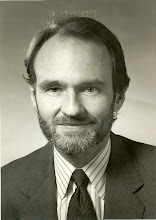Today’s Feb Chicago (and perhaps more than you knew you needed to know!)
View: Manufacturing - a smaller portion of US activity than the early days, but as good a lead as they come.
Background: This trusty release and others like it used to be just the “NAPM” to those of us old enough to remember, or the Nat Assoc of Purchasing Managers survey. There are 163 districts in the US; most are affiliates of the umbrella - Institute of Supply Mgmt, which decided to get heavy handed and change the regional survey name to Purchasing Manager’s Index (PMI) instead, the name of their own survey. And eventually the idea is that the districts will all change name, to indicate their allegiance; for example, the Board of the Houston NAPM on Jan/2011 approved the name change to ISM – Houston (but not, we hear, without a brawl in the board room!).
Still, many districts send out their own survey, proudly clinging to tradition. There is also the national survey for manuf and, as of June/1998, one for non-manuf (due tomorrow and Mar5 respectively), both compiled by the national organization and both reflecting the entire US; in the case of manuf it includes 18 industries. The information in the regional reports is not used in calculating the national report – “no way we trust those guys!” All the districts use the same questionnaire - five (5) sub-indexes, weighted as follows: Production, .25 / New orders, .30 / Supplier deliveries, .15 / Inventories, .10 and Employment, .2. - but with Exports and Imports added to the national survey and weighting changed a tad.
Then a diffusion process is applied to the answers, which can be only “better,” “same” or “worse.” The result is calculated by taking the percentage of respondents that reported conditions better than the previous month and adding to that total, half of the percentage that reported no change in conditions. Thus, a 50 would indicate and equal number of respondents reporting “better conditions” and “worse conditions.”
Result: The key Chicago district read slowed a tad in Jan but from a very solid pace; factory activity has now been growing in this region for 30 consecutive months in fact and faster than the average for the whole country. Because inventories are lean, production gains are strong. With today's read, we note that the Employment print was the highest since 1984 and New Orders were through the roof, their highest level since Mar/11. Past years we have found a sound correlation between the Chicago Employment read and NFP.
It is true that manufacturing does not make up the large percentage of activity it did in the old days but we have found that its leading characteristics are sound, especially those of the Chicago region and the ISM national results, and especially the New Orders and Employment components. These releases are key in soundings for the seascape just ahead. The factory sector is not roaring naturally, but getting close. It is not firing on 8 of 8 but 6+ of 8 and heading to 7, contrary to market view which had it in a near-term stall. No way. There is more 1) domestic and 2) offshore demand than economists have yet come to grips with. They will make that correction in the near term, and with that, GDP.
Robert Craven

No comments:
Post a Comment